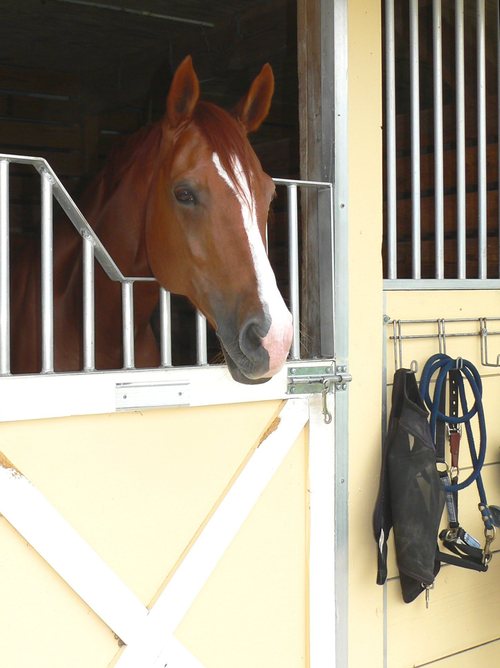During winter weather, efficient barn ventilation should get rid of excess moisture, respiratory disease organisms, dust and waste gases. Obviously, when the air outside is cold and saturated with moisture it is difficult to keep a good atmosphere in the barn.

Better ventilation = Better horse health
During the cold season, ventilation goals for horse barns change from heat removal to controlling moisture, odor, ammonia, and pathogen viability.
For a start to better ventilation, keep doors open provided this does not create a strong draft. After that, make sure there are no blockages in the existing ventilation inlet and outlets. If there is space boarding you could remove every second board or better still turn a space of boarding into a door with hinges that can be opened in calm conditions and closed in windy conditions.
It is important to get fresh air to the horse and eliminate stale air before it accumulates. Good ventilation is, ideally, designed into the original barn plans and takes advantage of wind, air currents, and thermal buoyancy.
Natural ventilation uses openings located along the side walls and the ridge and takes into consideration the topography and how the barn is situated in relationship to its surroundings.
According to veterinarians, horses are most comfortable in temperatures ranging from 45 to 75 degrees F (7 to 24 degrees C). Horses tolerate cold very well and adapt to cold breezes when housed outside. During winter, horse barns should be kept no more than 5 to 10 degrees F (3 to 6 degrees C) warmer than outside temperatures.
Tightly closing the barn by closing all windows, doors, and fresh-air inlets is a mistake when it comes to your horse's health. If condensation can be seen on interior surfaces during cold weather, the barn does not have sufficient ventilation for good horse health.
As air heats it can carry more moisture so the greater the temperature difference between the inside and outside the better the air movement and exchange of moisture needs to be.
During the cold season, ventilation goals change from heat removal to controlling moisture, odor, ammonia, and pathogen viability. Having doors at each end of the barn that can be opened to provide maximum air circulation during cold months helps keep the barn filled with fresh air. For maximum efficiency, the airflow should include the stable area.
Checking the air quality near the floor in stalls is very important, especially for the well-being of foals or when horses eat at floor level. Dust, bedding, manure, and urine can create stuffy conditions at ground level even before they become noticeable to someone walking through the area.
Read more about Healthy Barns
